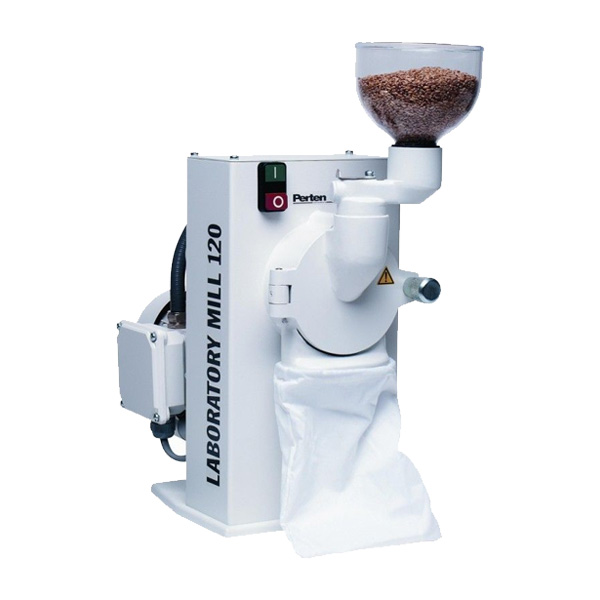Laboratory Mills
Convenient and rapid sample preparation
The type of sample preparation depends on the requirements in the analysis to be made. For this reason, it is important to select the correct preparation for the analysis in question. Perten Instruments can offer two types of Laboratory Mills, the hammer type mill and the disc type mill.
Disc mills are used when grinding samples for moisture determination, whereas hammer mills are used for most other applications, such as Falling Number, Glutomatic and NIR analysis for example.
Features and Benefits
- Falling Number and Gluten Index - Officially approved mills for Falling Number and Gluten Index sample preparation.
- High sample homogeneity - Improves repeatability and accuracy of analytical results.
- Robust design - Excellent durability and very low cost of ownership.
- Suitable for grains, oilseeds and more - Flexible mills for grinding of many different sample types.
Models and Accessories
The type of sample preparation depends on the requirements in the analysis to be made. For this reason, it is important to select the correct preparation for the analysis in question. Perten Instruments can offer two types of Laboratory Mills, the hammer type mill and the disc type mill. Disc mills are used when grinding samples for moisture determination, whereas hammer mills are used for most other applications, such as Falling Number, Glutomatic and NIR analysis for example. Read more about hammer mills and disc mills on the page "Technology".
We hope that you will be able to find a model that suits your needs, and recommend that you use the "Model selection guide". Don't hesitate to contact Perten Instruments or your local representative to discuss your needs.
Laboratory Mill 3100
LM 3100 is a hammer mill with a robust metal construction built in an insulated for low noise level. It is suitable for grinding for Falling Number, Glutomatic, Kjeldahl and NIR analysis. It has a cyclone sample outlet for convenient sample collection, which also makes the mill virtually self-cleaning between grindings.
Laboratory Mill 120
This is a simpler hammer mill with robust metal construction. The sample is collected in a nylon bag. It is suitable for the same applications as the LM 3100.
Laboratory Mill 3310
is a disc mill specifically designed for grain moisture analysis and is approved for both oven and NIR moisture tests. It is also adopted by AACC, standard methods No. 55-30 to determine wheat hardness by PSI (Particle Size Index). It can grind samples of up to 50 grams.
Laboratory Mill 3610
A larger disc mill also approved for oven and NIR moisture tests. is also well suited for grinding large size material such as feed raw material, pellets etc. The LM 3610 can grind larger samples than the LM 3310.
Accessory
Mill feeder
A motor driven rubber paddle Mill Feeder can be added to provide a consistent feed rate. This improves grinding of high moisture grain and grain with the hull remaining, e.g. barley, oats and rice. The constant feed rate also improves overall mill performance and reduces motor strain caused by overfeeding of the sample.
Technology
Hammer mills
The hammer mills grind by means of a high speed rotating steel "hammer" and has a sieve in the periphery through which the sample leaves the grinding chamber. By selecting different sieves the particle size distribution in the sample can be varied. The hammer mill is typically used to produce a fine and homogeneous sample. The Perten Instruments hammer mills can grind up to 300 gram samples which is the requested amount in for example the Falling Number test. Because of the heat development in the grinding operation and the high air flow through the grinding chamber this type of mill is not suited for grain moisture determination.
Disc mills
The disc mills grind the sample between one stationary and one rotating metal disc with teeth. The main application for the disc mills is grain moisture determination thanks to the possibility to grind grain without moisture loss. The particle size from the mill can be varied by adjusting the distance between the stationary and the rotating disc. There are also different disc types to choose from.


